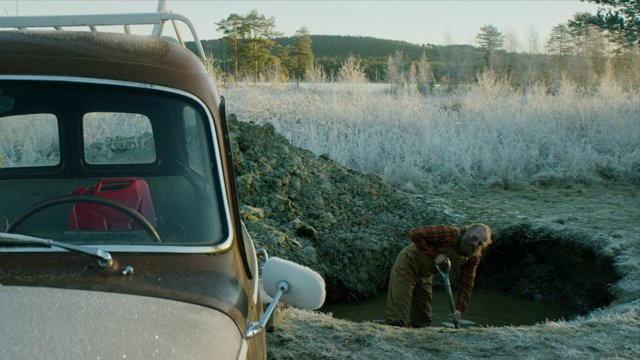Sweden’s Unique Advantages 🌅 for Filming and Photography
Learn more about film and photography in my LinkedIn newsletter 📰
Or through my YouTube tutorials🟥 👀
If you live in Sweden and work with image creation (film and photography), either as a client ordering film or as the producer who creates them, you have two huge advantages that you might overlook.
Below, I will walk you through productions from my portfolio, showing how they were shot according to these two advantages, so you can create similar images yourself.
Later in this article, I will walk you through how these images were shot. ⬇️
1. Right of Public Access (Allemansrätten) 🌲
Let’s start with the “right of public access” (allemansrätten) in Sweden.
This means you can enjoy nature even if it's not your property, as long as you use common sense.
Next time you watch a commercial or a video, think about it - were there any scenes in nature? Remember, outside the Nordic countries, this right is unique.
It means filming in nature is pretty cheap compared to renting a studio or another location, (as long as you don’t need to bring large teams to hard-to-reach places.)
2. Slow Sunsets - Near the Arctic Circle 🌅
Sweden is close to the Arctic Circle, far north on the globe, and this gives a fantastic advantage. The closer you are to the Arctic Circle, the slower the sunset and the longer the twilight.
For example, compare Sweden with Ecuador:
Stockholm: On June 30th, 2024, sunset is at 22:06, and dusk is at 23:33, lasting 1 hour and 27 minutes.
Ecuador (near the equator): On June 30th, 2024, sunset is at 18:21, and dusk is at 18:43, lasting only 22 minutes.
Having 1.5 hours of sunset light is a big advantage compared to just 20 minutes in Ecuador. Plus, you can film for another 30 minutes beyond dusk in Sweden with modern light-sensitive cameras. I haven’t tried it in Ecuador.
The Light Sensitivity of Cameras Improved in 2010
The final piece that made everything come together is that digital film cameras' light sensitivity improved in 2010. (In technical terms, the native ISO went from 320 to 800.) Now, cameras need even less light to take a good picture. These three things - access to nature, long sunsets, and better camera sensitivity - make these images super cost-effective and really beautiful to watch.
Sunset to Dusk Timeline: When to Shoot What Look
Let's walk through all these images from left to right to see what time at sunset or twilight they are created.
☀️ 2-3 hours before sunset:
Light pushing through the trees - depending on the thickness of the forest, this should be 2-3 hours before sunset. You can add some fake fog to make the sunrays pop!
☀️ 1-2 hours before sunset:
I remember this forest being very open, so the sun came through easily.
We added some fog to make the sunrays stand out.
🌅 At sunset:
The last sunrays are hitting the ground.
🌅 At sunset:
The last sunrays are hitting the ground.
🌅 At sunset close-ups:
You usually can’t put the sun directly on someone’s face. But just before the sun disappears, the light becomes a lot softer, and you can use it on the subject in a close-up.
💜 Early twilight in the forest:
The sun has set, so you get a cooler color because the sun is still shining light from behind the horizon into the sky, bouncing light. Find a spot in the forest where the light can come through, and have the subject looking upwards.
💜 Twilight: The sun has set, and the last light is only hitting the atmosphere now. You can see a little pink color at the very edge of the horizon.
💜 Twilight close-ups:
This is what a close-up can look like when you still have that little pink in the atmosphere. It reflects in the eyes, and the warm pink color looks good on the face.
🌌 End of twilight:
The sun isn’t hitting the atmosphere anymore, and there’s no more pink glow.
Now, we are fading into darkness by the minute.
The One Downside and My Trick to Overcome It
The one downside for production is that filming these times are often "inconvenient" for the crew or those in front of the camera.
Big productions usually include overtime after 8-10 hours of work. For example, if dusk is at 23:33, then including wrap-up, you might keep working until 1 in the morning.
But here’s my secret trick! First, you do one normal day with the full crew, all the actors, etc., then you do an extra half day with just 2-3 people to shoot the twilight scenes.
The great thing about sunset and dusk scenes, and the reason I’m writing about this topic, is that you don’t really need big crews—the good light is usually enough to get great images.
And if you have a small content production where the entire team is just 3-4 people and you want it to look more visually interesting, use the right of public access and include a twilight scene in your story.
End note
What do I want you to learn or take away from this post?
Include nature and twilight scenes in your script, especially if you're a small team on a small budget.
Make the trade-off to have some inconvenient working hours to get some great-looking images. I've done it myself many times and can really recommend it.
Good luck!
Did you enjoy this post? ❤️
Learn more about film and photography in my LinkedIn newsletter 📰
Or through my YouTube tutorials🟥 👀
And get my best freelancing tips at onemancrew 🥇










